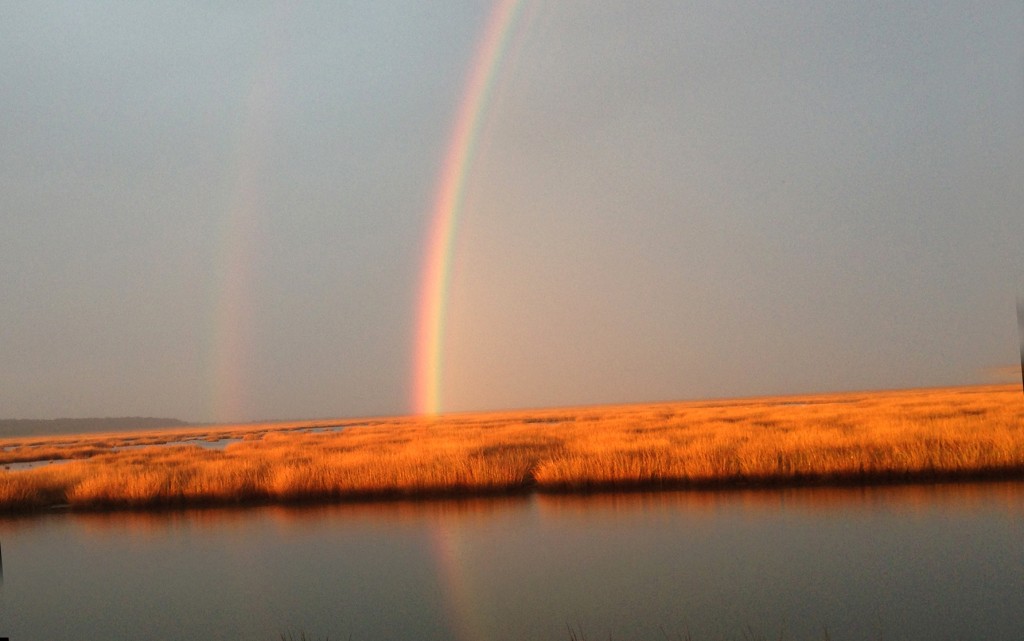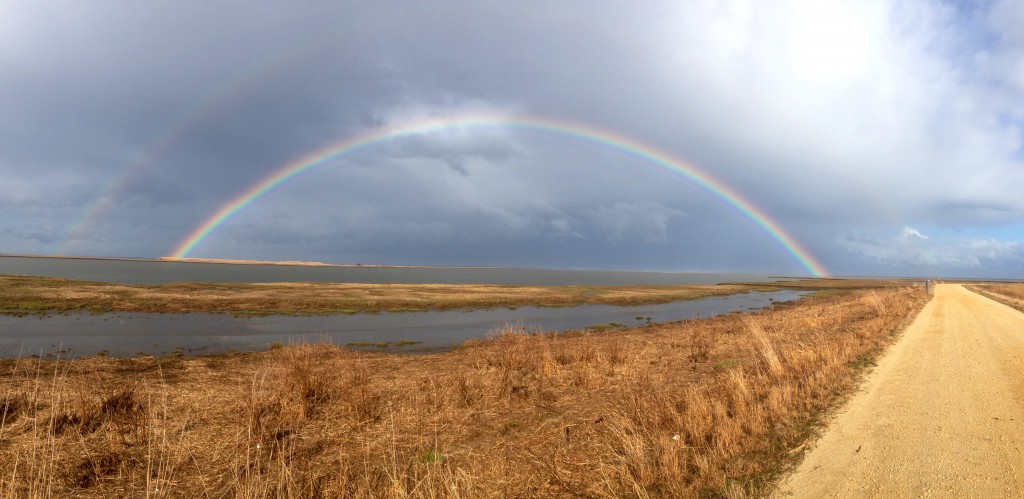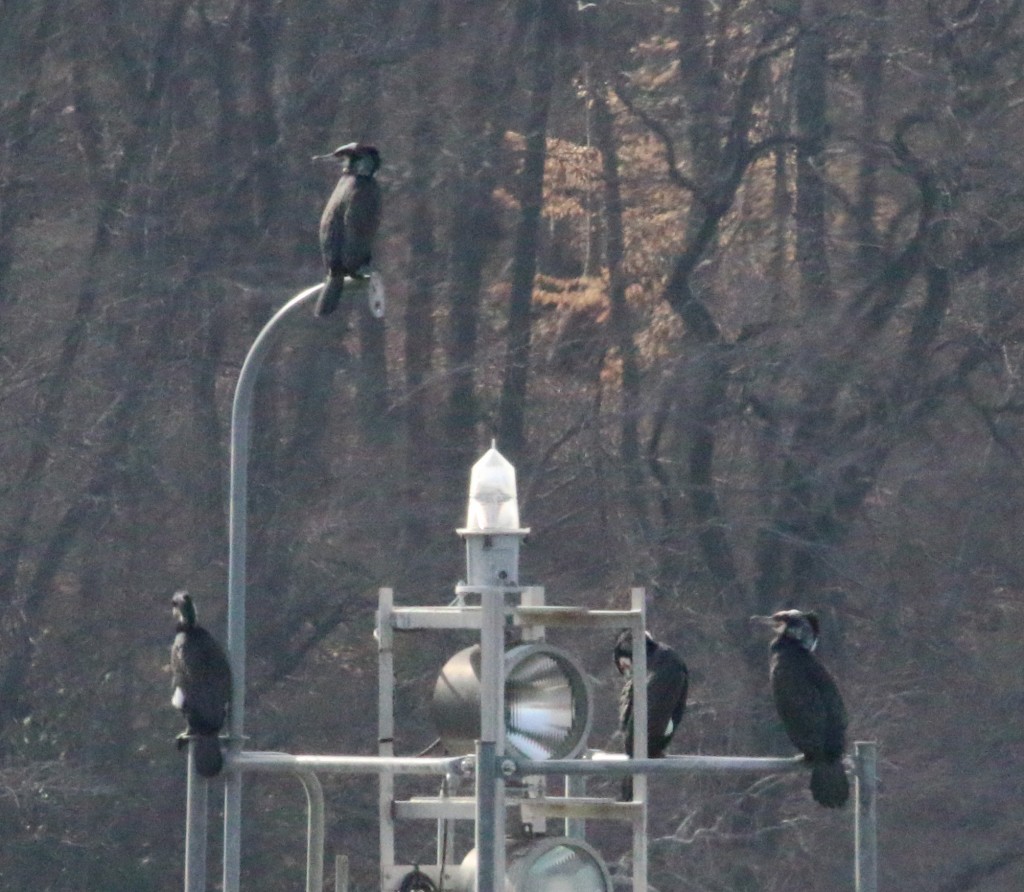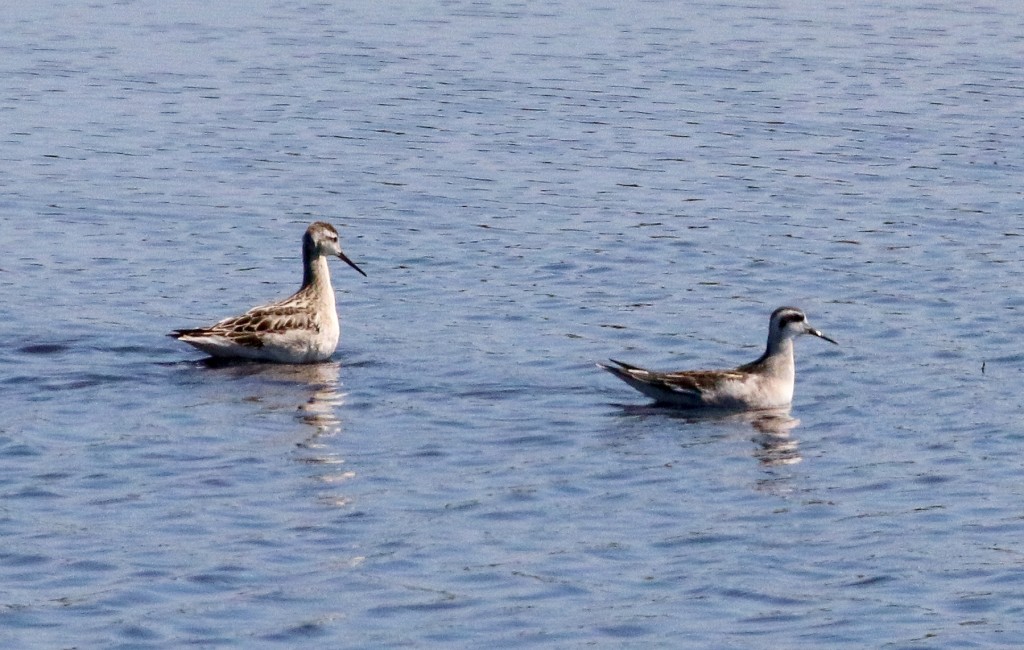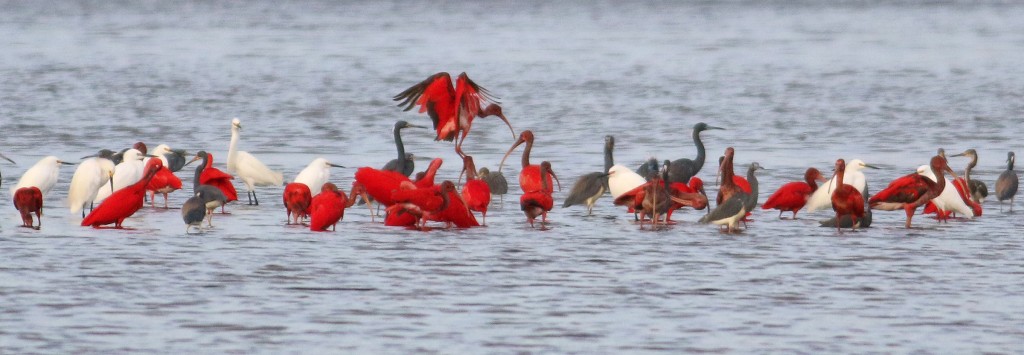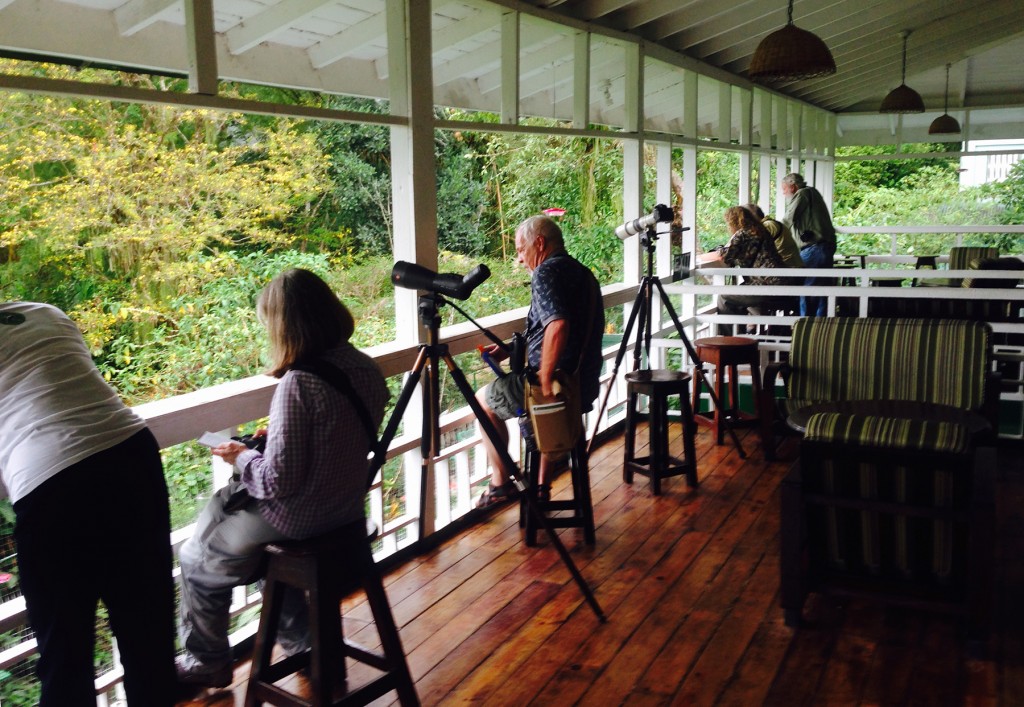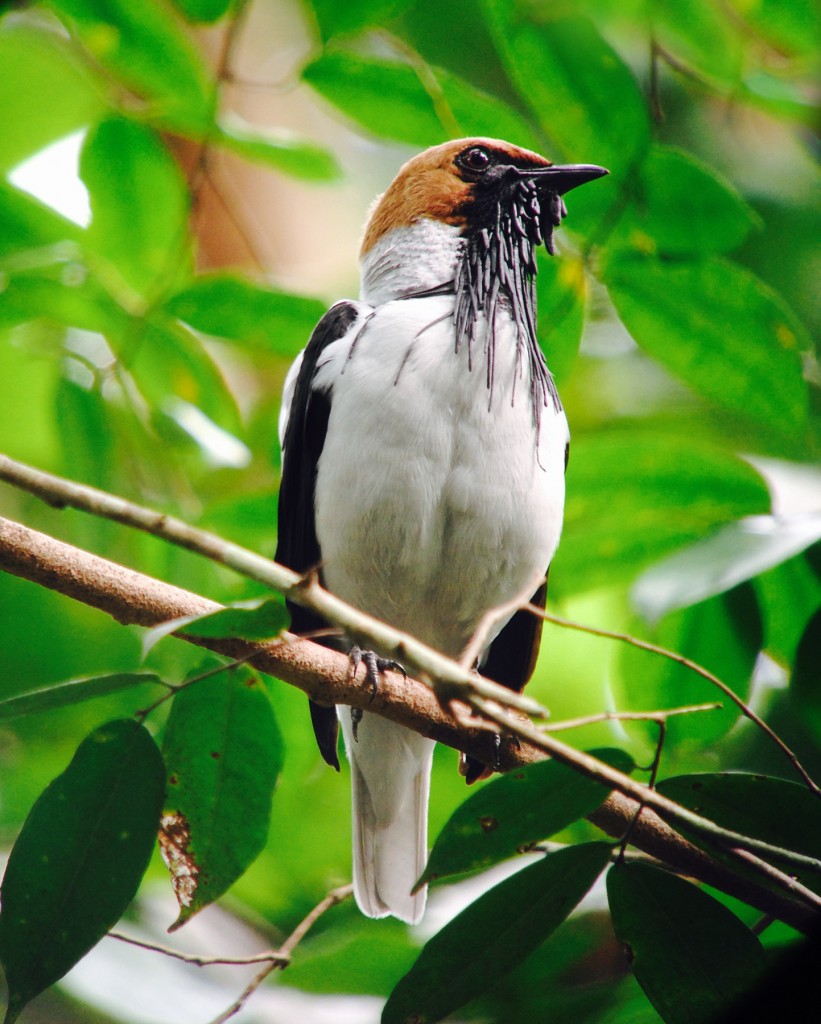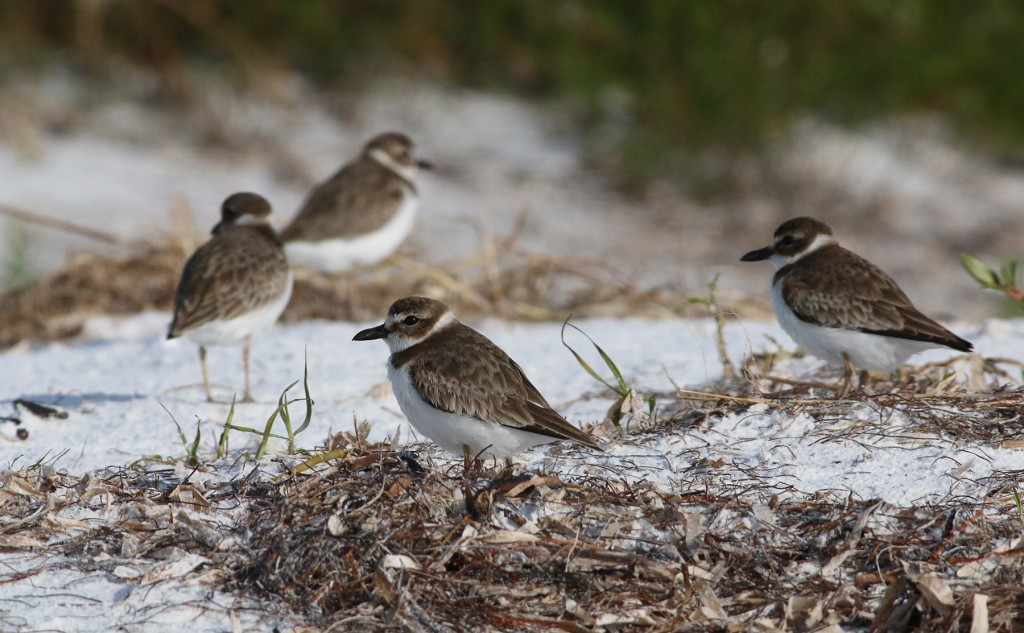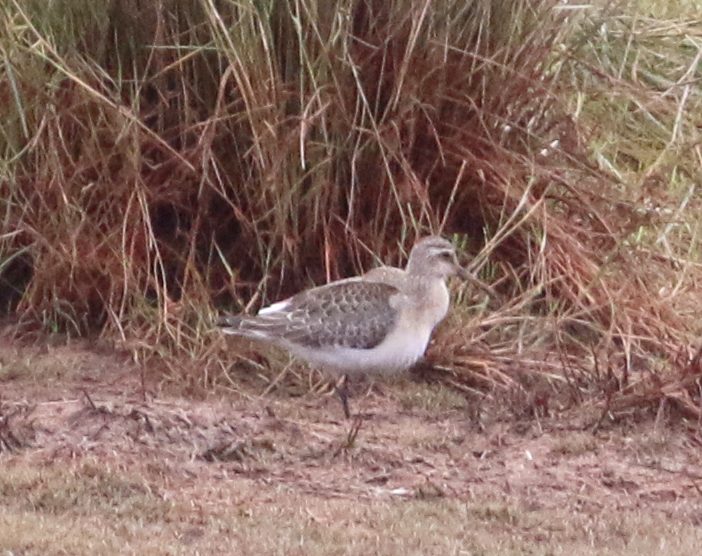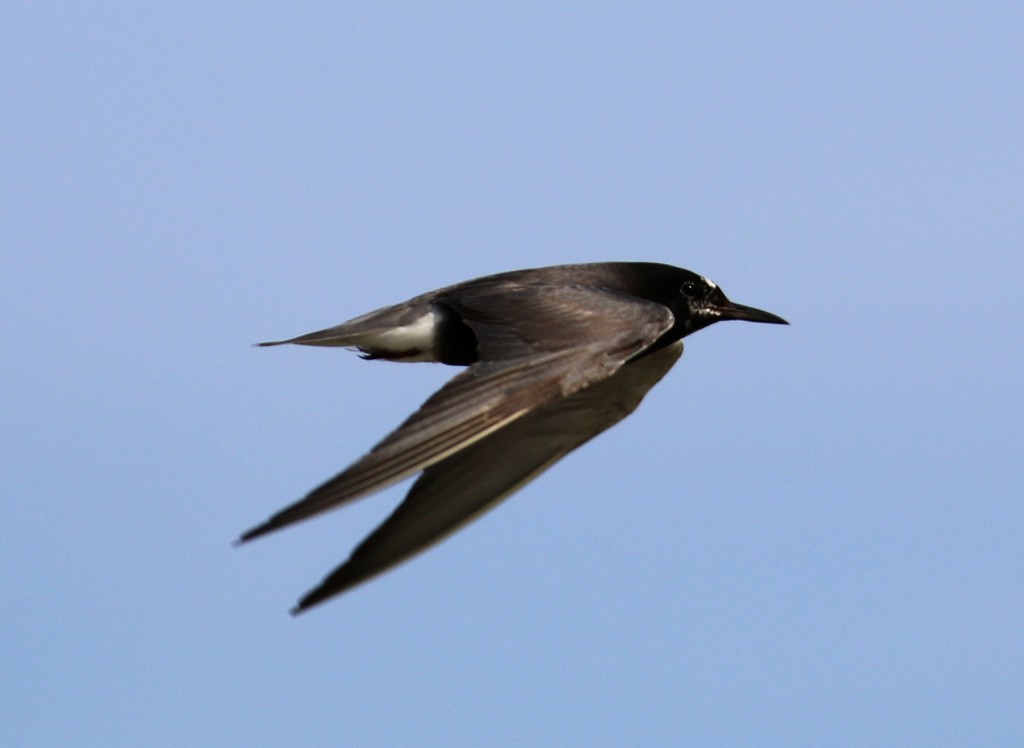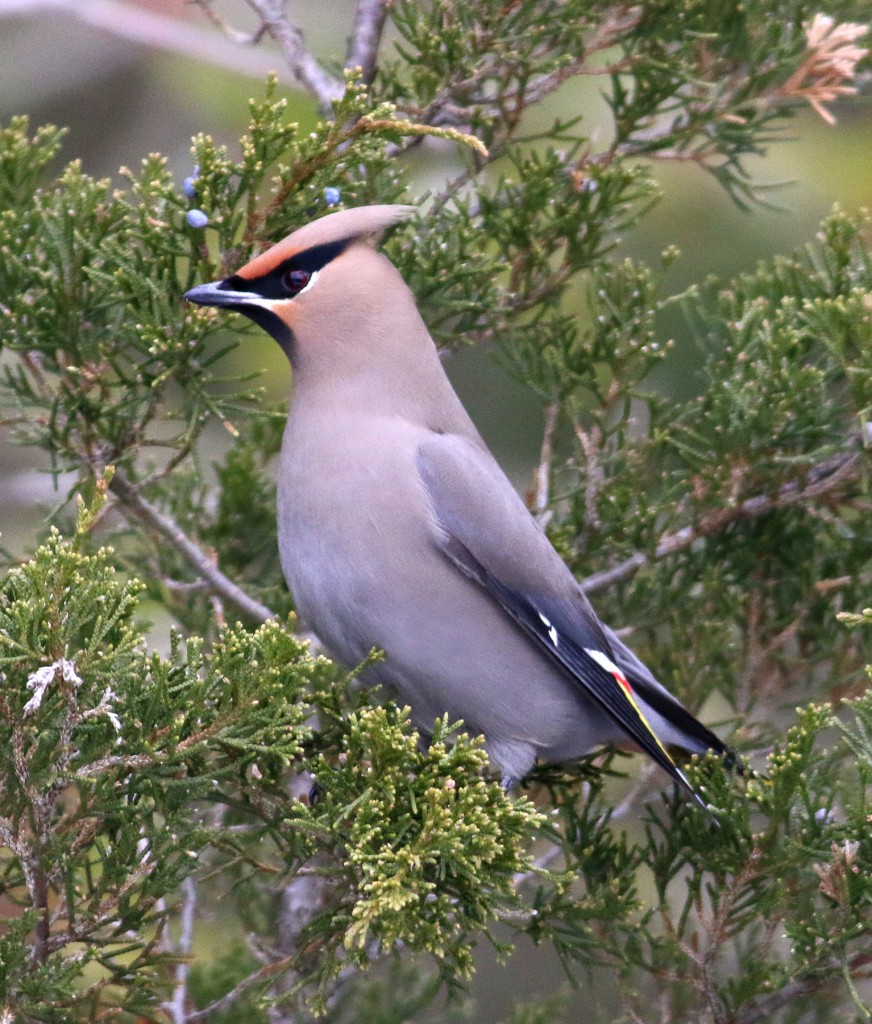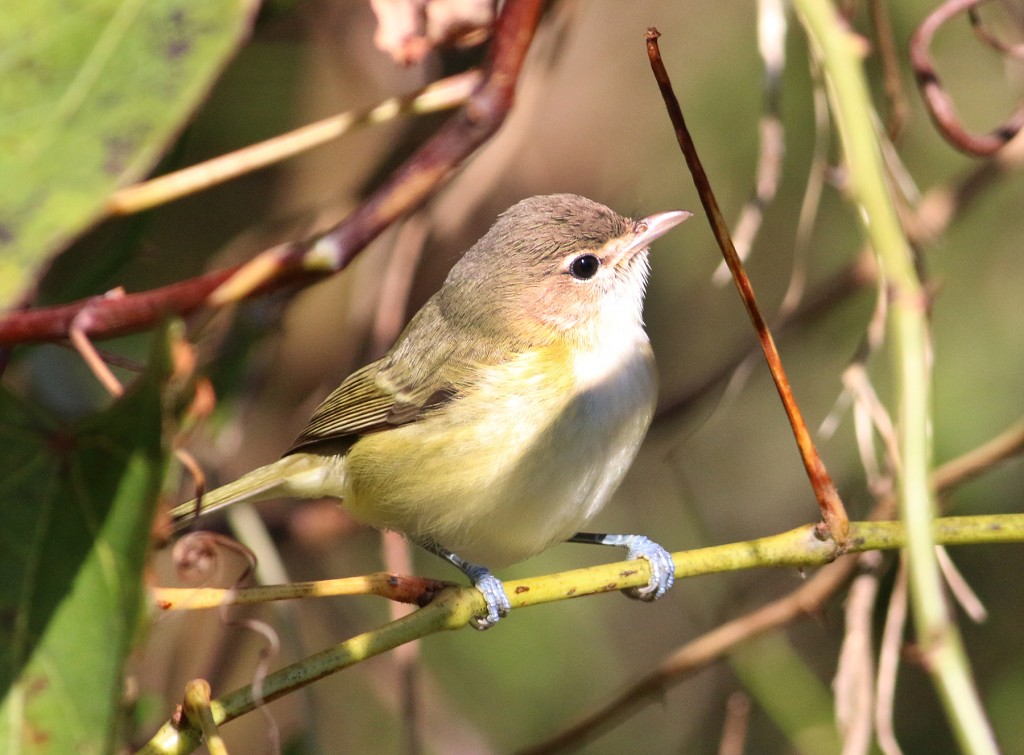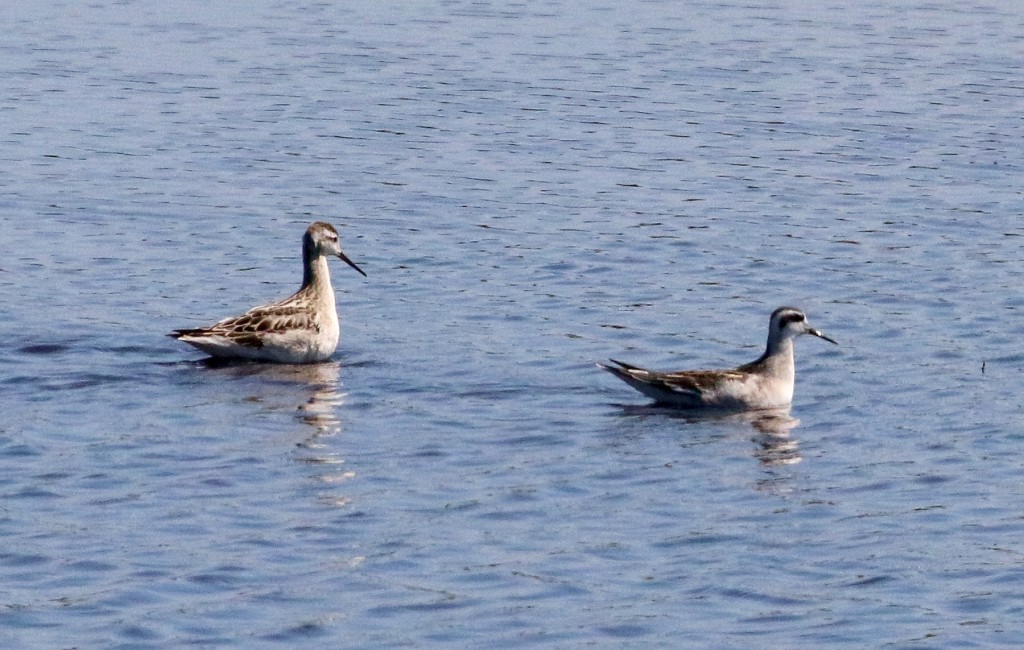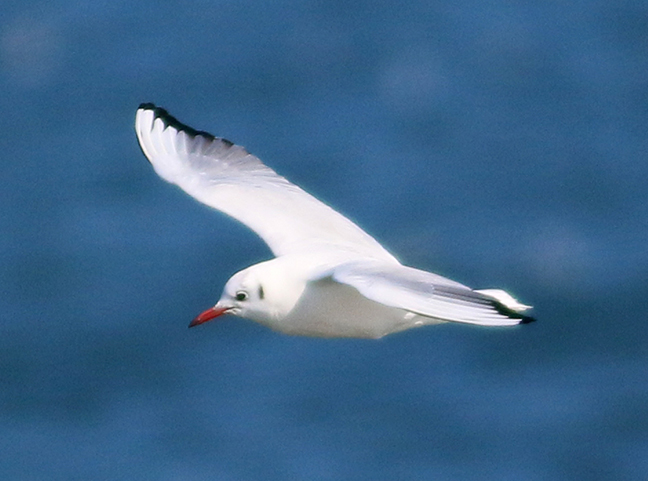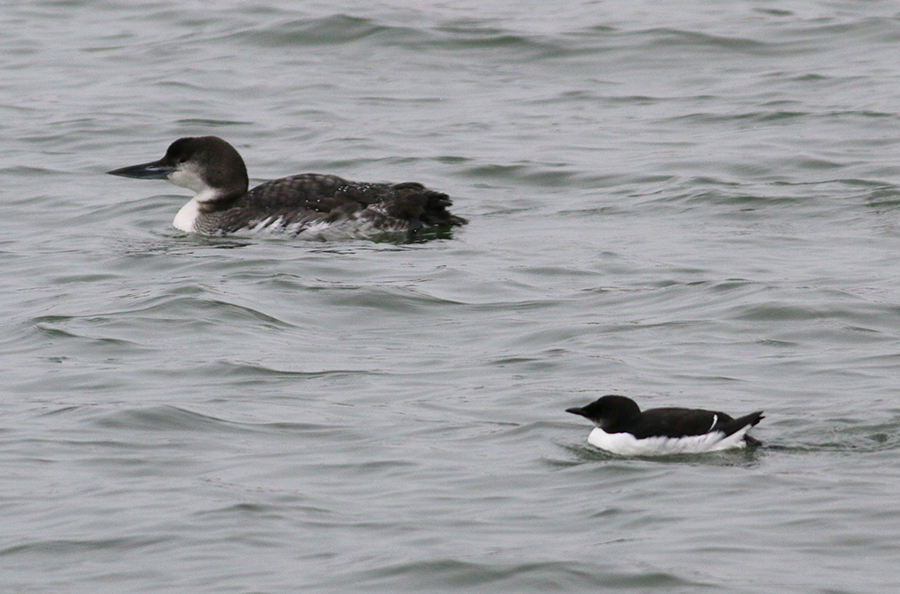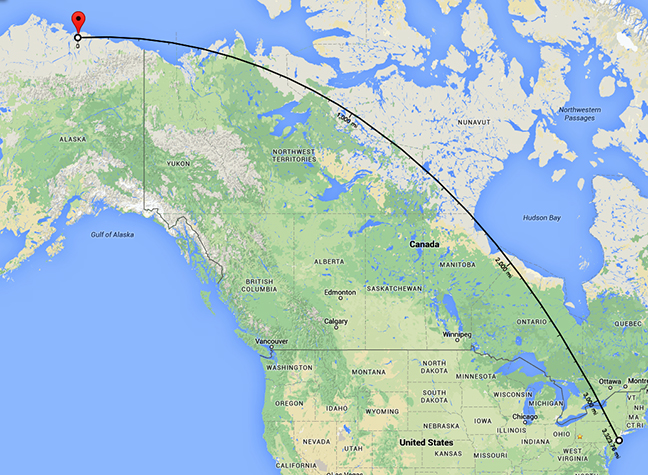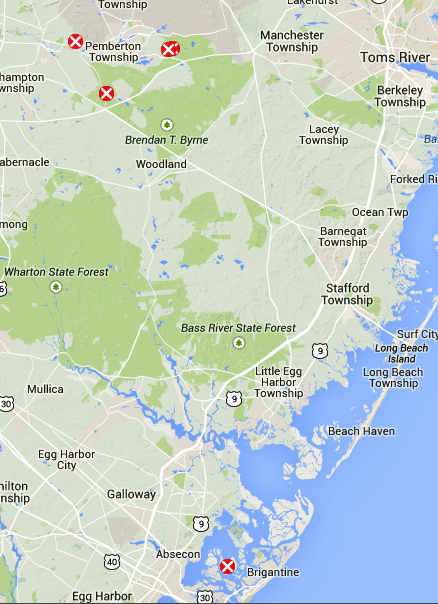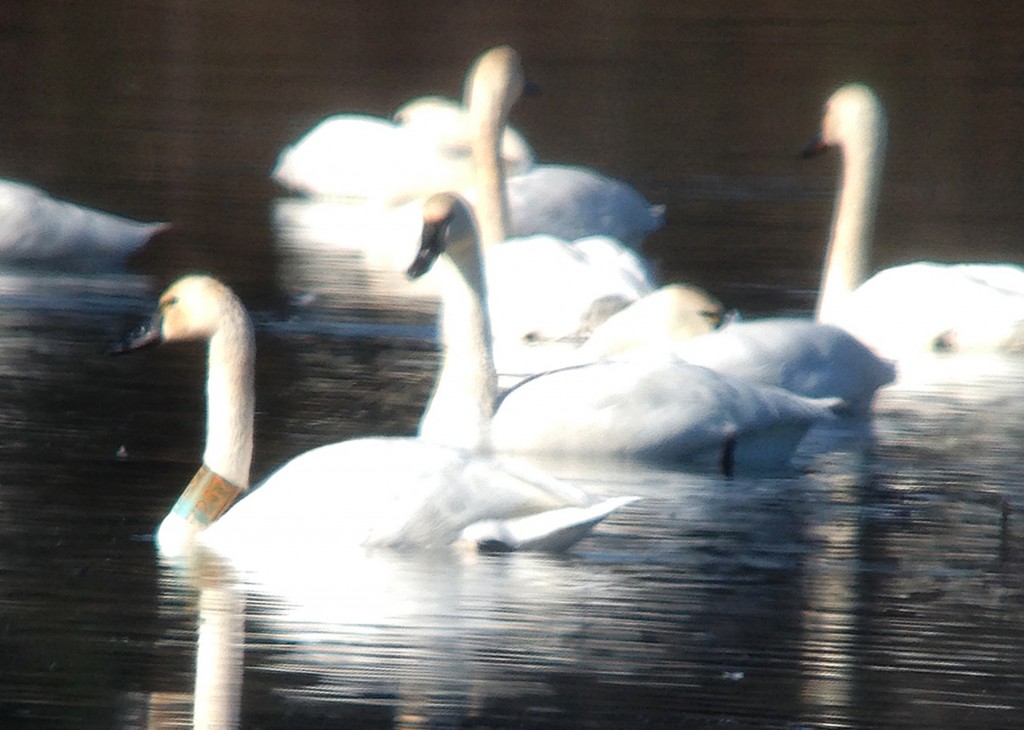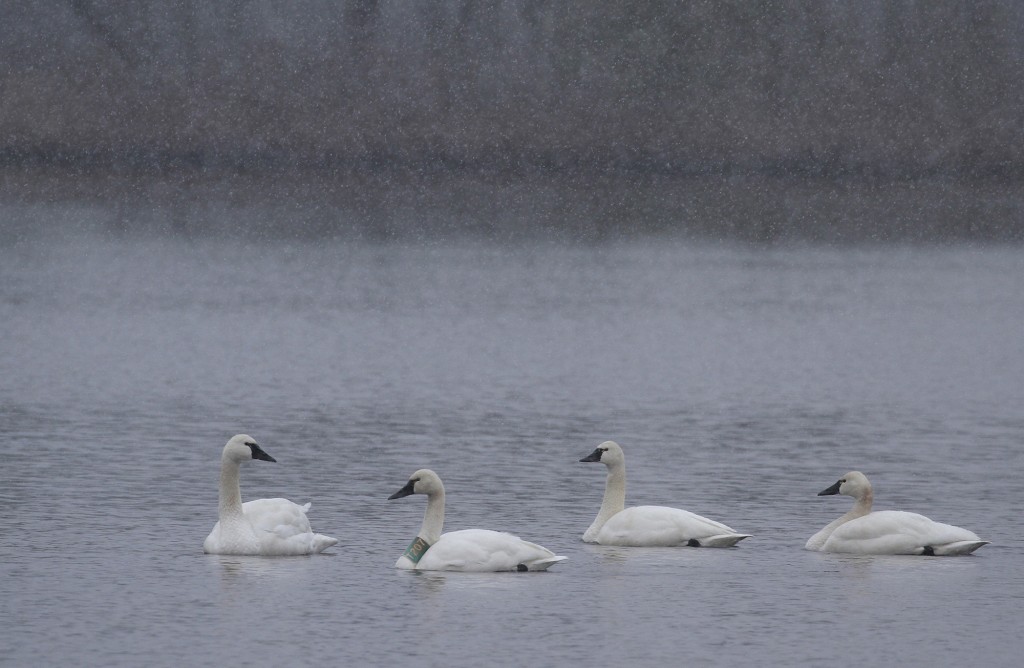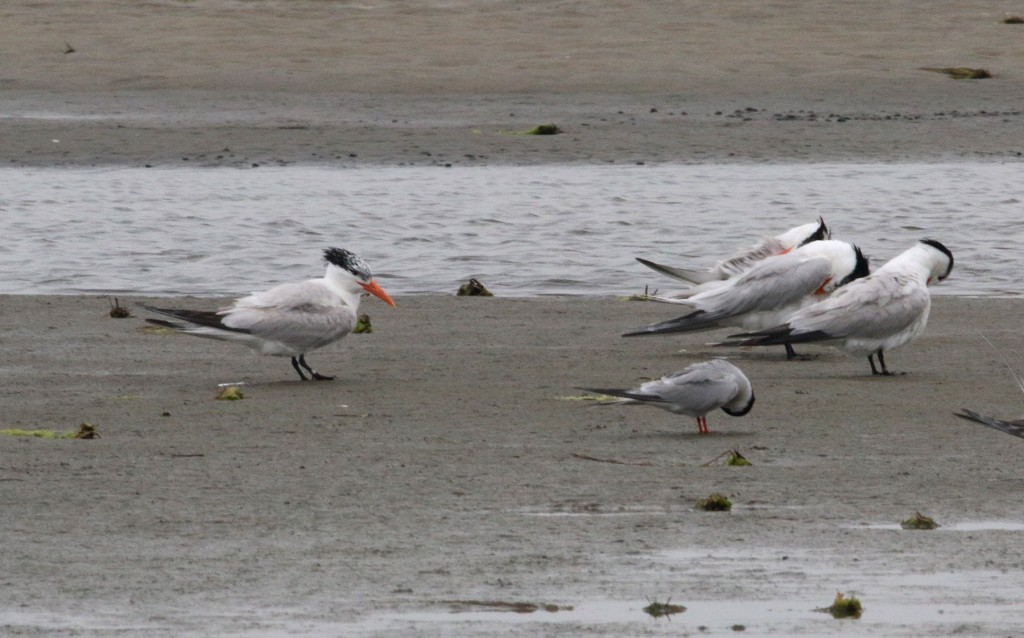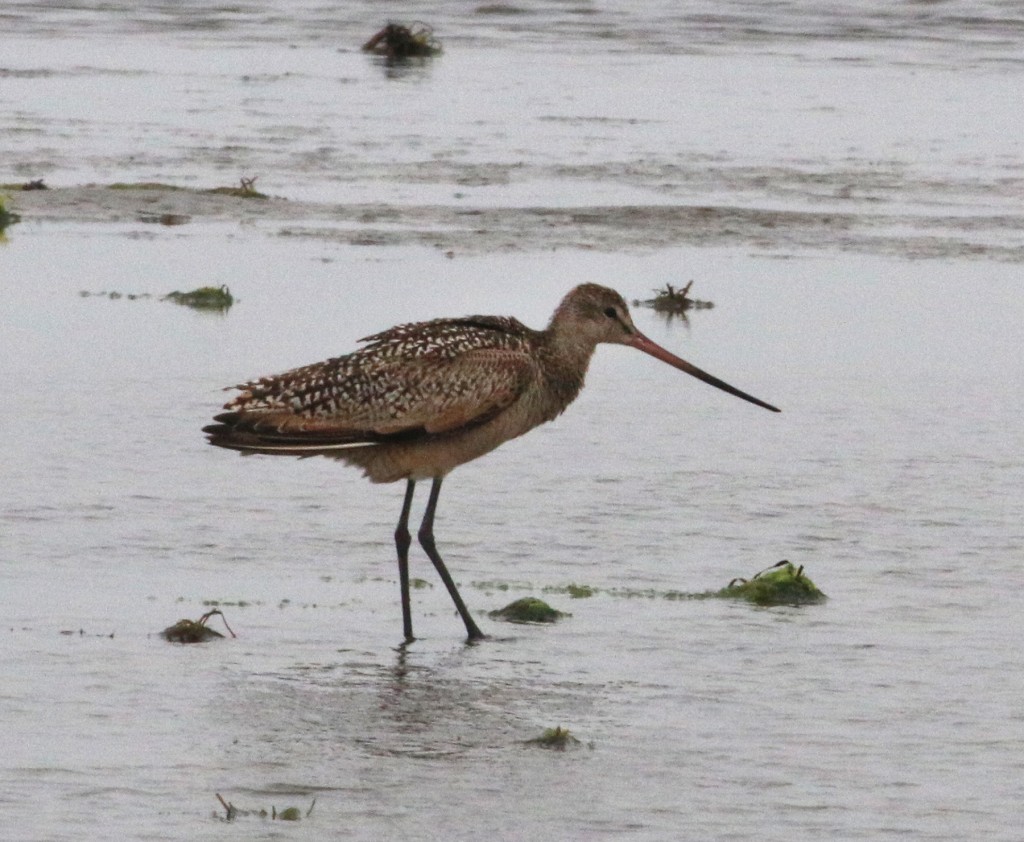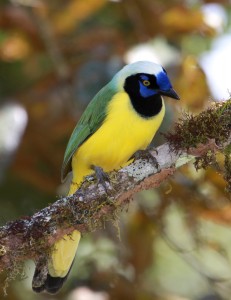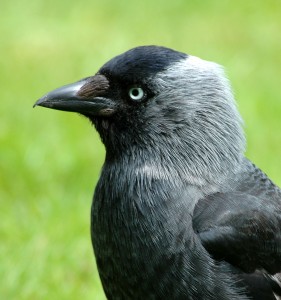As 2014 draws to a close, it seems like an ideal time to look back at the highlights of the past birding year. This was my first full year of birding after retirement, so I was able to spend far more time in the field than in previous years. According to eBird I accumulated a respectable total of 263 species in New Jersey in 2014, with the vast majority of these species being seen while becoming acquainted with the new local patches here in Ocean County. Unlike the previous ten years which each featured a bird-themed vacation, this year was so filled with exploring the new local patches that it never seemed necessary to travel to more exotic locations. The result was only two new life birds, both seen in Cape May. Maybe I’m getting lazy. Maybe I’m becoming weary of the importance placed on numbers. Or maybe I’m becoming wiser. Because somehow I don’t mind the minimal extensions of the life list; the year still was filled with memorable outings and meeting new people, which is far more important to me these days. Here are my personal top 10 birding events of 2014.
10. Sedge Wren. An enjoyable late fall outing to Franklin Parker Preserve didn’t turn up the hoped-for Pine Siskins or Common Redpolls, but it did result in finding an unexpected Sedge Wren, apparently the first ever seen at that location. Isn’t it the surprises that make birding so enjoyable?

Sedge Wren at Franklin Parker Preserve 11/23/2014.
Photo by Lisa Ryan.
9. Garrett Mountain in spring. Garrett Mountain can be amazing on a good spring day, and this May when driving down Rte 80 from a three-day scouting excursion to northern NJ on an overcast and drizzly day, I decided to stop in at Garrett Mountain despite it being past noon. Well, after 5 minutes I went back to the car to get my camera because I could see that is was going to be ‘one of those days’. Birds were everywhere and there were few people around. Wow.
8. Audubon exhibit NYC. Its not exactly being in the field, but this year brought the second installment of the New-York Historical Society’s three-year exhibit of Audubon’s original paintings. I can vividly recall the elevator door opening and nearly gasping as a wall full of Audubons greeted me. The next few hours were spent with a magnifying glass in hand, examining the details that simply don’t appear in any reproduction. Who could have imagined a super day in April in NYC seeing nary a bird across the street in Central Park?

Gallery from ‘Audubon’s Aviary part 2’ exhibit at New-York Historical Society April 2014
7. A Snowy and Red-necked winter. In contrast to the winter of 2012-2013, which was a great year for Red Crossbills, the winter of 2013-2014 turned out to be an unprecedented banner year for both Snowy Owls and Red-necked Grebes in our area. Snowy Owls were seen in every county of the state, and seemingly every trip to the coast turned up yet another Snowy Owl in the dunes, with my personal high of six seen in one day. If it wasn’t for the Snowy Owls, the abundance of Red-necked Grebes would have been the top bird story of the winter here. When you see five Red-necked Grebes at one time at close range in the Shark River, you know it is a good year for them. We apparently can thank the abundance of lemmings and the nearly frozen Great Lakes for this double blessing. What will the winter of 2014-2015 bring us?

Barnegat Snowy Owl April 16, 2014
6. Tundra Swan T207. I reported a banded Tundra Swan in Whitesbog last winter, hoped that she would return, and indeed, this November she appeared back in NJ for the 5th time in the last seven years just 5 miles away from Whitesbog. The search for T207 no doubt will become an annual ritual for me.
5. Whiskered Tern, Cape May. I don’t chase rarities often these days, but it was mid-September and a mega-rare Whiskered Tern appeared for only the third time in North America (each time in Cape May), and it was lingering. Even if we didn’t see the tern, September in Cape May can be great. And it was.
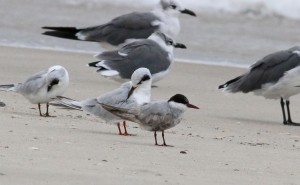
Whiskered Tern, Cape May 9/16/2014
4. Northern Shrike in Whitesbog. It was early November and I was wondering if the Tundra Swans returned to Whitesbog. While driving around the dikes a sleek robin-sized bird caught my eye in the top of a tree. Northern Shrike! According to eBird it was only the second Northern Shrike found in NJ this year, and the only one for the winter season. I returned several times, re-finding it perhaps six times over a period of ten days for others to see, but it remained cautious and mobile and evasive. What a great bird.

Location of shrike sightings (marked with an ‘S’)
3. Cape May in fall. This was my first time staying overnight in Cape May in fall, sharing a house in mid-week for three marvelous days of good company, good weather, and good birds. The images are flying past me now: experiencing morning flight at Higbee dike, raptors constantly overhead, Rufous Hummingbird, 3 Eurasian Wigeons, huddled in back of the Northwood Center watching their backyard warblers. I’ll be back again next year.

Group photo on the porch at Cape May 10/10/2014
2. Boating tours of Barnegat Bay and Eared Grebe. One of the advantages of being retired is that it provides an opportunity to share my enthusiasm for birding with others. In July I became involved with the volunteer program at Cattus Island County Park, and more specifically their Early Bird Ornithology Tours, which provides access to seeing the birds of the bay from the comfort of sitting in a pontoon boat. The birding was good right through to our last outing at the end of September, when I spotted and photographed an Eared Grebe, which is on the NJ review list. It was the first time I had to fill out a report for the NJ bird records committee. Leading the boat tours was a wonderful experience that I look forward to continuing again in 2015.

Capt. Diane on the ‘Betty C”, our boat for the Barnegat Bay Birding Tours.
1. Canoeing the Sedge Islands. Starting on July 23 and continuing for eight trips scattered through Nov. 5, I was fortunate to explore the Sedge Islands of Island Beach State Park by canoe. Each of these trips had its own surprise, highlighted by sightings of up to 100 Brown Pelicans, seven Marbled Godwits, two Black Terns, dozens of Tricolored and Little Blue Herons, Caspian and Royal Terns, Red Knots, Piping Plover, American Bittern, Great Cormorant, and out-of-season Common Eider and Red-breasted Merganser. The birds were relatively tolerant of us, so we enjoyed seeing high-quality birds on each trip with relatively close access. Who could ask for more? The 2014 canoeing trips were weekly events beginning in late August; in 2015 they will begin in May or June when the shorebirds are present in breeding plumage. Hey, I’m looking forward to 2015 already.
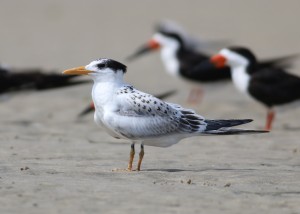
Black Skimmers and immature Royal Tern on the sand bar in Sedge Islands.
